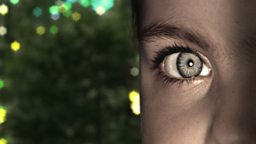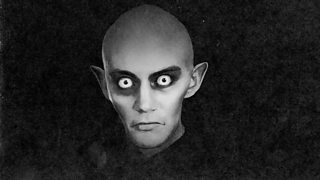The Science of Scary
In honour of Fright Night, we thought we’d do a little paranormal investigation of our own. What is it that makes some of us leap for the sofa cushions at the opening scenes of a horror film? What do people that love them get out of them, and what tricks do film-makers use to manipulate us? What, in short, is the science of scary?

Childhood associations
Fight or flight, the primal impulse that is triggered by a surge of adrenalin when our stress receptors think we’re under attack, can produce some incredibly strong memories that can stay throughout life. If you were terrified by a ghost story as a child anything associated with the supernatural as an adult could trigger earlier memories that will cause another adrenalin surge that’s already happening as the opening credits begin.
Here's the science bit…
The almond-shaped amygdala is the part of the brain associated with fear. But when Thomas Straube at the Friedrich-Schiller-University of Jena monitored people watching Alien, The Shining and The Silence of the Lambs, they discovered that it wasn’t the amygdala that was responding to the fear. It was the visual cortex, the insular cortex which deals with self awareness and the thalamus that passes motor and sensory signals that demonstrated the most activity. The researchers decided that the amygdala dealt with sudden, unexpected threats, but horror films produced what they called "sustained anxiety". Sounds great, doesn't it?

So why do some of us like it?
The feeling you get when you stagger off a rollercoaster having screamed yourself silly is what horror lovers are looking for. The flood of adrenaline, dopamine and endorphins that produce wobbly legs and euphoria would be produced if you’d successfully evaded a lion’s jaws, but watching a horror film is about getting the same kick in a safe space.
Why do certain things scare us?
By connecting a neutral stimulus with a negative consequence, or "fear conditioning", pretty much anything can be linked to a fear response. However, the three common themes in horror are predation (being eaten – Jaws, Alien), contagion (zombies, vampires) and violation of the person, often through dismemberment (Saw, Friday 13th) which psychologists link to fear of losing the self. Most horror films are based around one of those three common human fears.

How am I being manipulated?
Oh, various ways. For a masterclass in movie suspense, have a look at our feature:
Sound is very powerful in horror. Horror film music can either be non-linear distorted notes or squealing noises (feedback, shrieky trumpet) which are perceived by our brains as distress cries and create more of a fear response. The classic violin scream in Psycho is an excellent example.
Bangs and crashes of loud percussion also make us jump because of our primal fear of thunderstorms. Soft classical music can often be used (Hannibal) which adds to suspense when we are waiting for a "jump scare".
A what?
A jump scare. The bit you know is coming, you are braced for, and it still results in you clinging to the light fitting and crying. A classic jump scare is accompanied by some kind of musical crescendo or loud crash. Then there’s "the reveal" (the face at the window), "the mislead", where you’re waiting for something and a cat jumps across the screen and "the blink", where you think you saw something but it was too fast.

The controversy
In the late 1980s Dolf Zillmann, Norbert Mundorf and other researchers showed Friday the 13th Part III to a series of male undergraduates who were paired with a female partner (who was actually a research assistant). The men said they enjoyed the film almost twice as much if the woman showed distress during the film. The women undergraduates, paired with male researchers, said that not only did they enjoy the film more if their male companion appeared calm in the film, but were also felt to be more attractive if they’d hidden their fear.
So maybe the whole horror industry is just an elaborate courtship ritual? Who knows. Enjoy it anyway. Oh, and by the way….
Fright Night
-
![]()
Dramas and programmes to disturb and delight.
-
![]()
In this animation Claudia Hammond explains that while we're scared, we're also learning.
-
![]()
What is it about children in horror that is so chilling?
-
![]()
As her friends seek a mysterious figure outside, Meggie, who's blind, is left alone...




